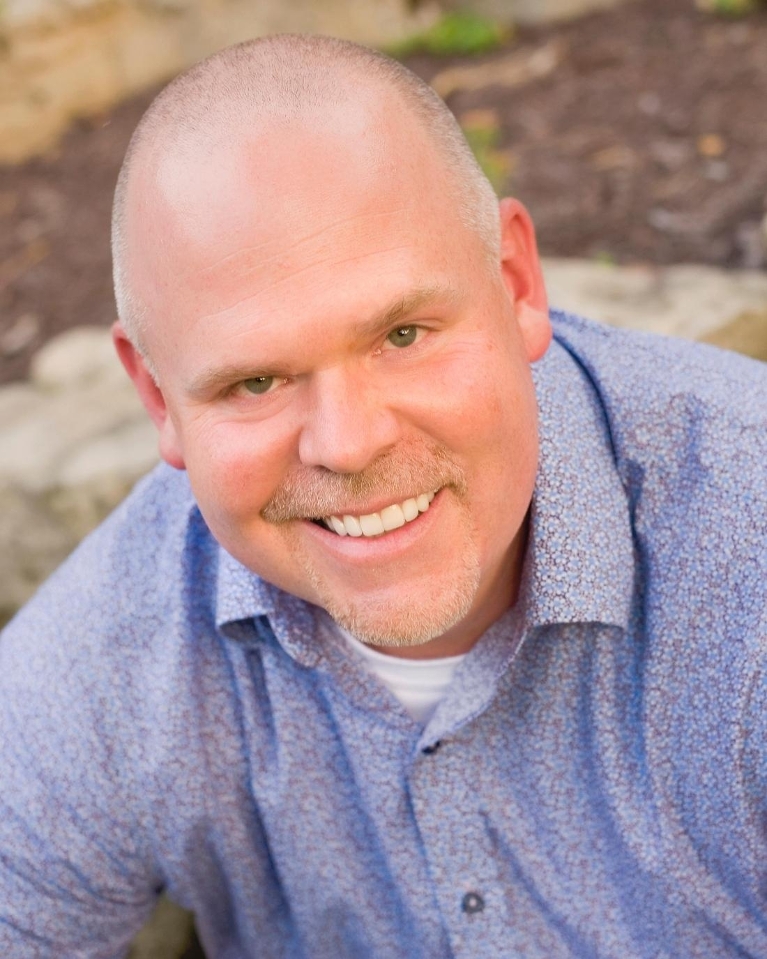Understanding and Treating This Rare Sleep Disorder
Do you wake up each morning feeling exhausted, irritable, and struggling to concentrate throughout the day? For those suffering from central sleep apnea, this is a daily reality. While central sleep apnea isn’t as prevalent as obstructive sleep apnea, it can still significantly impact your health and quality of life when it does occur.
At Fox View Dental, Dr. Chad Yenchesky helps patients from De Pere, Green Bay, Allouez, Howard, and Ashwaubenon understand their sleep apnea diagnosis and explore appropriate treatment options. To learn more about central sleep apnea and how we can help, contact our dental office in De Pere by calling (920) 336-4201 today.
What Is Central Sleep Apnea?
Central sleep apnea (CSA) is a sleep-related breathing disorder characterized by the brain’s inability to send proper signals to the muscles that control breathing, leading to recurrent pauses in breathing during sleep. Unlike obstructive sleep apnea, which involves a physical blockage of the airway, central sleep apnea stems from a neurological issue.
Central sleep apnea can be attributed to various underlying medical conditions, including heart failure, stroke, kidney disease, and neurological disorders. It can also occur when sleeping at high altitudes. Less than 1% of the general population is affected by central sleep apnea, making it significantly rarer than obstructive sleep apnea. However, certain risk factors like age, gender, and underlying medical conditions can increase the likelihood of developing this condition.
Central Sleep Apnea vs. Obstructive Sleep Apnea: Key Differences
Dr. Chad Yenchesky, with his advanced training in dental sleep medicine through Dr. Steven Olmos’s TMJ & Sleep Therapy Research program, understands the critical distinctions between these two conditions. While both involve breathing difficulties during sleep, they have fundamentally different causes and often require different treatment approaches.
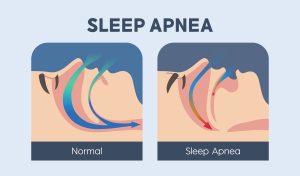
Central Sleep Apnea (CSA): Results from the brain and the muscles responsible for respiration not functioning correctly. The airway remains open, but the brain fails to send the necessary signals to breathe. This leads to intermittent breathing interruptions without any physical obstruction.
The Brain’s Role in Breathing Regulation
Understanding central sleep apnea requires appreciating how the brain normally controls breathing. The respiratory center, located in the medulla oblongata at the base of the brain, constantly monitors blood oxygen and carbon dioxide levels. Based on this information, it sends signals to the diaphragm and other respiratory muscles to initiate and control breathing.
This process happens automatically, without conscious thought. When there’s a disruption in this delicate regulatory system, it can lead to central sleep apnea, as the brain fails to send the necessary signals to maintain regular breathing patterns during sleep.
Types of Central Sleep Apnea
Cheyne-Stokes Breathing Pattern
Cheyne-Stokes breathing pattern is a specific type of central sleep apnea characterized by a distinctive crescendo-decrescendo pattern—breathing gradually increases to a peak, then decreases, followed by a brief period of no breathing at all. This cycle then repeats throughout the night.
This pattern is commonly seen in patients with heart failure, stroke, or kidney failure. It’s attributed to delays in the feedback loop between the lungs, blood, and the brain’s respiratory center.
High-Altitude Periodic Breathing
High-altitude periodic breathing occurs at elevations typically above 8,000-10,000 feet due to decreased oxygen levels in the atmosphere. It’s characterized by alternating periods of rapid breathing and breathing pauses, with a shorter cycle length than Cheyne-Stokes breathing.
This form of central sleep apnea underscores the need to consider environmental factors during diagnosis and treatment. Symptoms typically resolve when returning to lower elevations.
Complex Sleep Apnea Syndrome
Complex sleep apnea syndrome, also called treatment-emergent central sleep apnea, represents a particularly challenging condition. It occurs in individuals previously diagnosed with obstructive sleep apnea who develop central sleep apnea during CPAP treatment. Essentially, while treating the obstruction, central apneas emerge.
Recognizing Central Sleep Apnea Symptoms
If you’re experiencing any of the following symptoms, Dr. Yenchesky may recommend undergoing a sleep study to determine if you have central sleep apnea:
Nighttime Symptoms:
- Observed breathing pauses during sleep
- Awakening with shortness of breath
- Difficulty staying asleep (insomnia)
- Nighttime chest discomfort
- Increased urination at night
Daytime Symptoms:
Chronic fatigue despite adequate time in bed
- Excessive daytime sleepiness
- Difficulty concentrating at work or while driving on Highway 41
- Morning headaches
- Mood changes, including depression and irritability
- Impaired memory
Interestingly, unlike obstructive sleep apnea, loud snoring is less common with central sleep apnea since the airway isn’t physically blocked.
Diagnosing Central Sleep Apnea
Comprehensive Sleep Study
Sleep studies, particularly polysomnography conducted in specialized sleep laboratories, play a vital role in diagnosing central sleep apnea. These comprehensive studies monitor and record various physiological parameters during sleep, including:
- Brain activity (EEG)
- Eye movements
- Heart rate and rhythm
- Breathing patterns and respiratory effort
- Blood oxygen levels
- Muscle activity
- Body position
The key diagnostic feature of central sleep apnea is the absence of respiratory effort during breathing pauses. In obstructive sleep apnea, the chest and abdomen continue moving as the body tries to breathe against the blockage. In central sleep apnea, all respiratory effort ceases.
Medical History and Evaluation
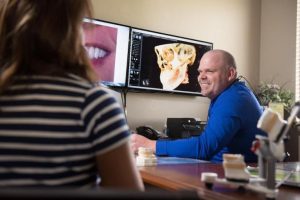
- Cardiovascular health, including a history of heart failure or irregular heartbeat
- Neurological conditions, including stroke or brain injuries
- Kidney function
- Current medications, particularly narcotic pain medications
- Recent travel to high altitudes
- Previous sleep studies or breathing disorder diagnoses
This detailed evaluation helps distinguish central sleep apnea from obstructive sleep apnea and identifies underlying conditions that may be contributing to the disorder.
Treatment Options for Central Sleep Apnea
Not all of these treatment options are available at Fox View Dental. Check with our sleep dentist in De Pere.
Continuous Positive Airway Pressure (CPAP)
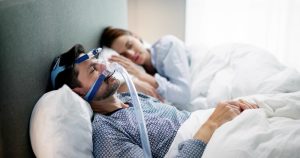
For central sleep apnea, CPAP works differently than it does for obstructive sleep apnea. Rather than simply keeping the airway open, the pressurized air helps stimulate breathing by maintaining consistent pressure in the respiratory system. However, not all patients with central sleep apnea respond well to standard CPAP therapy.
Bilevel Positive Airway Pressure (BiPAP) and Adaptive Servo-Ventilation (ASV)
BiPAP provides two levels of air pressure—a higher pressure during inhalation and a lower pressure during exhalation. This can make breathing feel more natural and comfortable compared to standard CPAP.
For more complex cases, particularly Cheyne-Stokes breathing associated with heart failure, adaptive servo-ventilation (ASV) devices can be highly effective. These sophisticated machines continuously monitor breathing patterns and adjust pressure support in real-time to maintain stable respiration.
Addressing Underlying Medical Conditions
Since central sleep apnea often results from underlying health conditions, treating these conditions represents a crucial component of management. This might include:
- Optimizing heart failure treatment with appropriate medications
- Managing kidney disease
- Adjusting medications that may suppress breathing
- Treating stroke-related complications
- Managing neurological conditions
Dr. Yenchesky works collaboratively with sleep physicians, cardiologists, neurologists, and other specialists throughout the Green Bay area to provide coordinated, comprehensive care.
Supplemental Oxygen Therapy
For some patients with central sleep apnea, supplemental oxygen therapy can help reduce the frequency of breathing interruptions. By providing a steady flow of oxygen through a nasal cannula during sleep, this treatment helps maintain adequate blood oxygen levels even when breathing pauses occur.
Medications
In certain cases, medications such as acetazolamide may be prescribed to stimulate breathing. These medications are typically reserved for specific situations, such as high-altitude periodic breathing or when other treatments have been unsuccessful.
The Role of Oral Appliances in Sleep Apnea Treatment
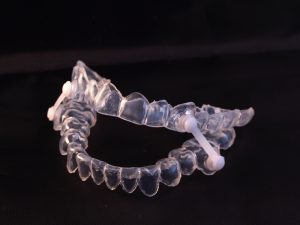
Dr. Chad’s extensive training through the Clinical Mastery Series and his continuous pursuit of advanced education—averaging over 100 hours annually—means he stays current on the latest research regarding all forms of sleep-disordered breathing. He can help you understand which treatment approach best suits your specific diagnosis.
Risk Factors for Central Sleep Apnea
Understanding risk factors helps identify who may be more susceptible to developing central sleep apnea:
- Age: More common in middle-aged and older adults
- Gender: Males are at a higher risk than females
- Heart disorders: Particularly congestive heart failure and atrial fibrillation
- Stroke or brain tumor: Conditions affecting the brainstem
- Kidney failure: Especially in patients on dialysis
- Opioid use: Narcotic pain medications can suppress breathing centers
- High altitude exposure: Recent ascent to elevations above 8,000 feet
Potential Complications of Untreated Central Sleep Apnea
Leaving central sleep apnea untreated can lead to serious health consequences:
- Cardiovascular problems: Increased risk of high blood pressure, heart attack, stroke, and worsening heart failure
- Daytime fatigue: Chronic exhaustion affecting work performance and safety, particularly dangerous when driving from De Pere to Green Bay or operating machinery
- Cognitive impairment: Difficulty with memory, concentration, and decision-making
- Mood disorders: Depression, anxiety, and irritability
- Reduced quality of life: Inability to fully enjoy activities with family, whether that’s outdoor recreation or attending your children’s sporting events
Dr. Yenchesky understands these risks from his comprehensive training and his own experience as a father to three children—he knows how important quality sleep is for being present and engaged with family.
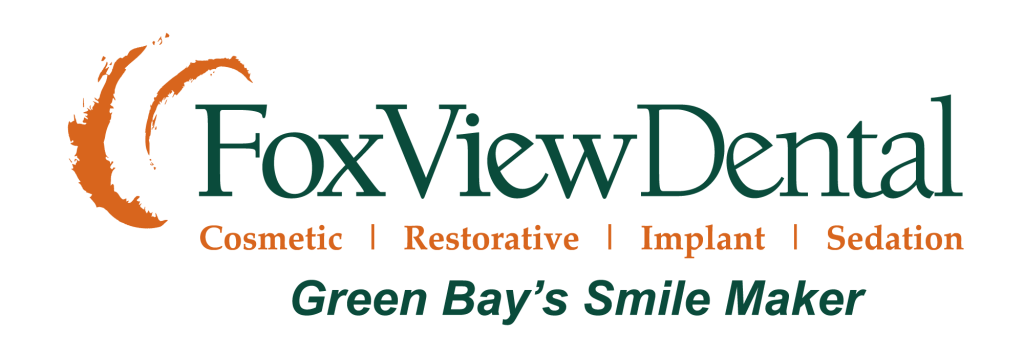
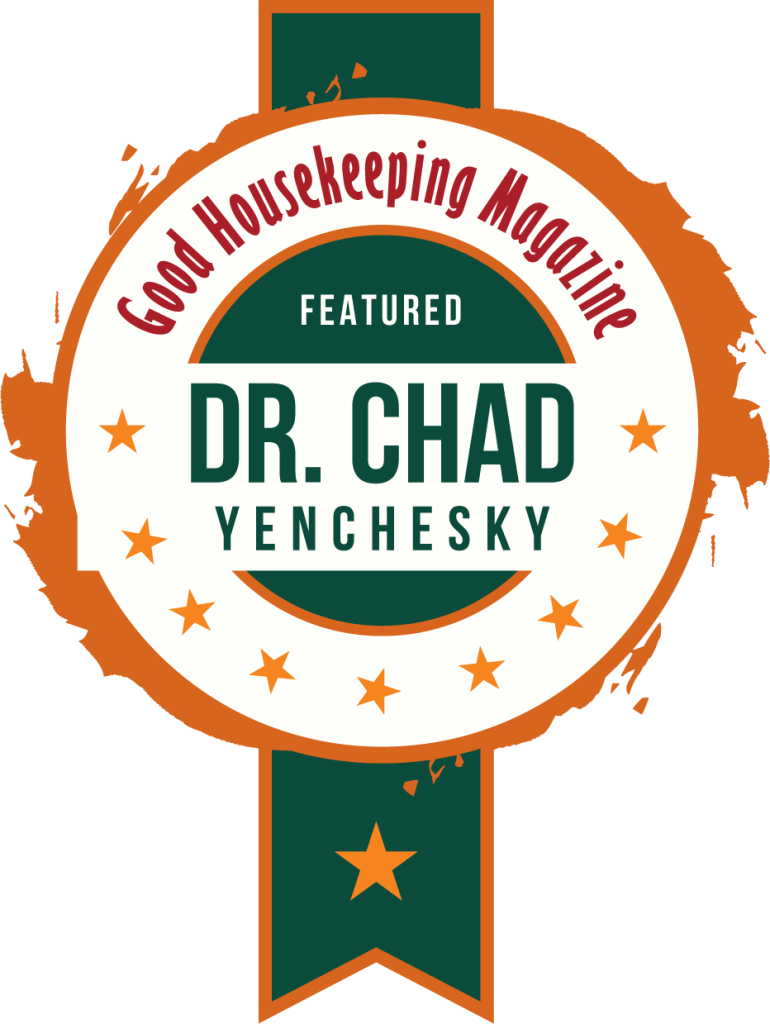
 Chronic fatigue despite adequate time in bed
Chronic fatigue despite adequate time in bed